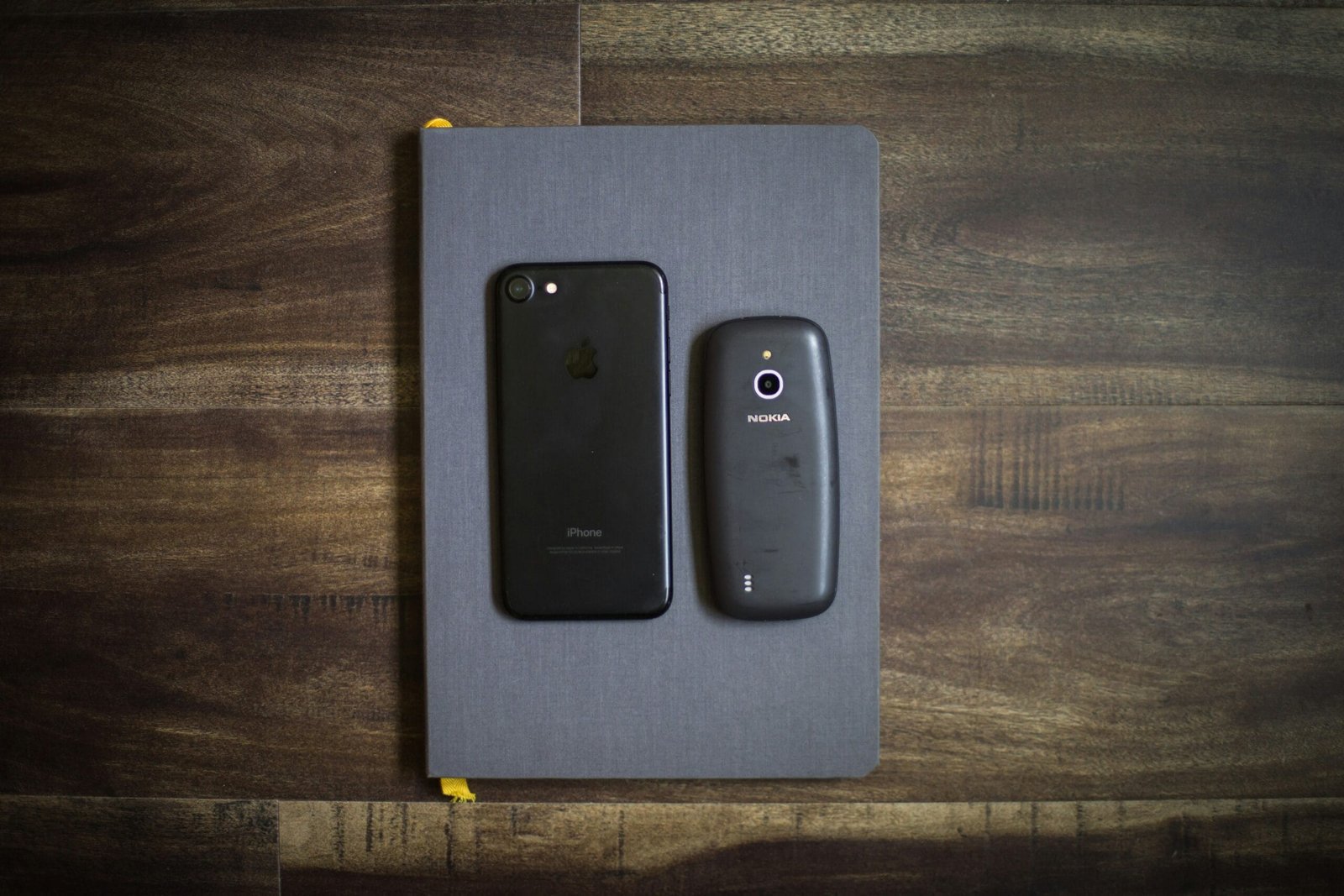
Understanding Your Smartphone Battery
Smartphone batteries are a fundamental component of mobile technology, and a solid grasp of their workings can significantly impact your device’s performance and longevity. Modern smartphones primarily use lithium-ion batteries, known for their high energy density and efficiency. These batteries comprise several interconnected cells that store and release energy, influencing the overall capacity of the device. The capacity of lithium-ion batteries is generally measured in milliamp-hours (mAh), indicating how much charge a battery can hold. A higher mAh rating typically translates to longer usage between charges.
The lifespan of your smartphone battery is influenced by several factors. Temperature plays a crucial role, as extreme heat or cold can degrade the battery’s performance and shorten its lifecycle. Additionally, charging habits significantly affect battery health. For instance, consistently depleting your battery to zero before charging can lead to a phenomenon known as “deep cycling,” which may diminish capacity over time. Conversely, maintaining a partial charge and avoiding overcharging can prolong the lifespan of your smartphone battery.
The chemistry behind lithium-ion batteries involves a delicate balance between lithium ions migrating between the anode and cathode. This electrochemical process allows for the storage and release of energy, but it is also susceptible to wear over repeated charging cycles. As a battery ages, the capacity diminishes due to the buildup of solid electrolyte interphase (SEI) layers or the potential degradation of internal components. Understanding these aspects of smartphone battery operation is essential for users seeking to extend battery life. By implementing best practices and being aware of the factors that contribute to battery wear, users can optimize their device’s performance and efficiency.
Adjusting Screen Brightness and Timeout Settings
The screen brightness of a smartphone plays a crucial role in determining its overall battery life. A brightly lit screen, while enhancing visibility in various lighting conditions, often leads to increased energy consumption. By adjusting the screen brightness to a suitable level, users can significantly enhance battery performance. Many modern smartphones come equipped with an adaptive brightness feature that automatically adjusts the screen brightness based on the surrounding light. This means that during bright daylight, the screen will become brighter, while at night, it will dim down to save energy. Activating this feature can help in finding a balance between visibility and energy consumption.
To manually adjust the brightness, users can navigate to their device’s display settings. Typically, there is a slider that allows the user to increase or decrease the brightness to their preference. Maintaining a moderate brightness level not only conserves battery life but also reduces eye strain. Moreover, in low-light conditions, reducing brightness can be particularly beneficial. Likewise, minimizing the screen timeout duration is an effective way to extend battery life. Most smartphones allow users to set a specific time after which the screen will automatically turn off when not in use. By selecting a shorter timeframe, such as 30 seconds or 1 minute, users can save additional battery life.
Implementing these changes to screen brightness and timeout settings might seem minor, but their cumulative effect can lead to substantial improvements in battery longevity. Users should regularly review these settings to ensure they are optimized for both their usage patterns and their environment. Ultimately, striking the right balance can significantly contribute to an overall enhanced smartphone experience without the constant worry of battery depletion.
Managing Background Applications
Effective management of background applications is crucial for maximizing your smartphone’s battery life. Many applications run continuously in the background, consuming significant power even when not in active use. By addressing this issue, users can prolong their device’s battery performance and ensure that essential functions remain available when needed.
To start managing background applications, the first step is to identify which apps are running. On most smartphones, this can be done by accessing the recent apps menu, typically activated by a designated button. Here, you will see a list of applications currently active. Simply swipe away the applications you are not using to close them. This method can quickly eliminate multiple unused apps from the background, allowing your battery to conserve energy.
Beyond simply closing apps, consider adjusting settings for specific applications to limit their background activity. Many smartphones allow users to customize permissions for applications, regulating data usage and operational capacity when they are not actively open. Navigate to your device’s settings, usually found under ‘Applications’ or ‘Apps’ in the settings menu. From there, you can select individual applications, allowing you to adjust options like stopping background data usage or disabling auto-sync features, significantly reducing battery drainage.
Moreover, many operating systems provide a battery usage report in the settings menu, showcasing the power consumption of each app over a certain timeframe. This can help identify any apps that are unexpectedly using more battery than anticipated. By regularly reviewing this information, users can make informed decisions about which applications to limit or uninstall entirely.
By actively managing background applications, you can significantly enhance your smartphone’s battery life, making your device more efficient and reliable for daily use.
Using Battery Saving Modes
Smartphones have become an integral part of our daily lives, and managing battery life is essential for optimal usage. Most modern smartphones come equipped with battery-saving modes designed to extend device longevity. These modes can drastically enhance battery performance by adjusting the phone’s settings to conserve energy.
Enabling battery saving modes typically reduces the overall device performance, which may result in slower app functionality, dimmed screen brightness, and limited visual effects. Users will benefit from a simplified experience, focusing primarily on essential functions, especially during critical moments when battery life is dwindling. To activate this feature, users can navigate to the settings menu, where they will generally find an option labeled as “Battery” or “Battery Saver.” Toggling on this setting can help manage ongoing tasks effectively.
Additionally, battery saving modes often limit background data, which is a frequent power consumer. By restricting the functionality of background apps, users can significantly reduce the amount of energy these applications use when running outside of the foreground. It is ideal to activate this mode when the battery level drops below a certain threshold, ensuring that essential tasks remain accessible without draining the battery further.
Moreover, these modes may automatically disable non-essential services such as location tracking or push notifications. While this is an excellent way to save battery life, users should be aware of the implications, as it may hinder some functionalities that rely on these services. Ultimately, strategically utilizing battery-saving modes can ensure that a smartphone remains functional for longer periods, particularly during important engagements or journeys.
Limiting Location Services and Connectivity Features
Smartphones today rely heavily on various connectivity features and location services that, while useful, can significantly drain battery life. To manage your smartphone’s energy consumption effectively, it is essential to understand how GPS, Bluetooth, Wi-Fi, and mobile data affect the battery. When these services are enabled, they continuously seek connections and updates, which can lead to fast depletion of power.
To begin optimizing battery life, consider adjusting your location settings. Many applications utilize GPS for location tracking, which requires considerable power. Users can limit location services by selecting settings that allow GPS to be activated only when necessary. For example, change the location access for apps to “While Using the App” instead of “Always.” This adjustment can significantly mitigate battery drain while still providing location functionality when needed.
Connectivity features such as Bluetooth and Wi-Fi also play a crucial role in battery consumption. If these features are not in active use, it is advisable to toggle them off. Bluetooth, for instance, continues to search for devices even when not in use, thus consuming power in the background. Similarly, leaving Wi-Fi on when you are out of range of a network can drain your battery as your smartphone continuously seeks connections.
An effective strategy for conserving battery life is to use Airplane Mode when your smartphone is not in use or during extended periods without connectivity. Activating Airplane Mode disables all wireless communication, including cellular data, Bluetooth, and Wi-Fi, allowing for maximum energy savings. It is advisable to toggle these features back on when needed, thereby striking a balance between connectivity and battery preservation.
Keeping Your Device Up-to-Date
In the ever-evolving landscape of technology, ensuring that your smartphone is up-to-date with the latest software versions is crucial for maximizing battery performance. Smartphone manufacturers regularly release updates that include enhancements to the operating system, which often contain optimizations specifically designed to improve battery management. These improvements can range from better power allocation among applications to the introduction of more efficient operating modes.
By neglecting software updates, users may inadvertently miss out on critical fixes and enhancements that can lead to significantly lower battery consumption. For instance, an update may introduce new algorithms that intelligently manage background processes, preventing unnecessary drain on battery life. Additionally, these updates can enhance the efficiency of applications, ensuring they utilize resources more judiciously. Keeping your smartphone updated positions it to harness these advancements, allowing your device to perform optimally.
Moreover, security updates often accompany software enhancements, protecting your device from vulnerabilities that can lead to malware infections, which can also impact battery life. A compromised device may experience excessive battery drain due to unauthorized applications running in the background. Regularly updating your smartphone safeguards against these risks, thereby supporting longer battery life.
To maintain an optimal smartphone experience, it is advisable to enable automatic updates in your settings. This engagement ensures you receive every critical update promptly, maintaining the latest optimizations for battery performance. By prioritizing software updates, you are taking a significant step towards prolonging your smartphone’s battery life and enhancing its overall performance.
Using Dark Mode and Wallpaper Choices
One effective way to enhance your smartphone’s battery life is by utilizing dark mode and making thoughtful wallpaper selections, particularly if your device features an OLED screen. OLED technology works by lighting up individual pixels, which means that darker images and themes contribute to lower energy consumption. Activating dark mode can substantially reduce battery usage by minimizing the number of illuminated pixels. Many mobile operating systems now offer built-in dark mode settings, making it easy to switch from the standard light theme to a more battery-friendly alternative.
To enable dark mode on your device, navigate to the display settings. Here, you will typically find an option to switch from light to dark mode. This simple adjustment not only contributes to longer battery life but can also enhance visual comfort, particularly in low-light environments. Moreover, many applications now support dark themes, allowing for a consistent experience across your device.
In addition to adopting dark mode, selecting low-power wallpapers can further aid in extending battery longevity. Wallpapers that are predominantly dark or consist of fewer bright colors are ideal for OLED screens, as they minimize the power drawn from the display. Several application stores provide a range of dark-themed wallpapers specifically designed for this purpose. Alternatively, you can create your own wallpaper using dark images or even a solid black background.
Simply put, making the switch to dark mode and choosing energy-efficient wallpaper can act as straightforward yet impactful measures to optimize your smartphone’s battery life. Both strategies work in tandem to ensure that your phone can last longer between charges, enhancing the overall user experience while being more mindful of power consumption.
Physical Conditions and Battery Care Practices
The longevity of a smartphone battery is significantly influenced by both environmental factors and proper care practices. One of the crucial elements is temperature management. Batteries perform optimally within a specific temperature range, typically between 20°C and 25°C (68°F to 77°F). Exposure to extreme temperatures, particularly heat, can accelerate chemical reactions within the battery that lead to degradation. For instance, leaving a smartphone in a hot car or direct sunlight can result in overheating, diminishing battery capacity over time. Conversely, extreme cold can temporarily reduce battery performance and may cause potential damage. Therefore, maintaining a moderate temperature is essential for prolonging battery life.
Another critical aspect of battery care involves using original chargers. Phone manufacturers typically design original chargers to match the specifications of their devices, ensuring that the appropriate voltage and current are supplied. Using third-party chargers may not only affect charging efficiency but can also lead to overheating or, in some cases, may permanently damage the battery. It is advisable to purchase directly from the manufacturer or certified retailers to mitigate these risks.
A common but often overlooked practice is the charging cycle. Excessive charging and discharging can put undue stress on the battery. Instead of letting the battery drain to 0% before charging, it is recommended to keep the battery level between 20% and 80%. This practice helps stabilize the battery’s chemical processes and extends its overall life. Additionally, when storing smartphones for a prolonged period, it is best to charge the device to about 50% before powering it down. This storage condition prevents battery cells from entering an overly discharged state, which can cause permanent damage. By adhering to these best practices, users can significantly improve their smartphone battery life, ensuring reliable performance over time.
Exploring Battery Health and Replacement Options
Assessing the health of your smartphone battery is crucial for maintaining optimal device performance. Most modern smartphones have built-in features that allow users to check battery health directly in the settings menu. For instance, on iOS devices, users can navigate to ‘Settings’, then ‘Battery’, and finally tap ‘Battery Health’. This section provides insights into maximum capacity and peak performance capability. Android devices also typically have similar features, though the path to access battery information may vary by manufacturer. Third-party apps are also available that can provide detailed battery diagnostics, offering additional data such as charge cycles and voltage.
Recognizing the signs that indicate a battery replacement may be necessary is essential. Common symptoms include excessive battery drain, where the battery depletes rapidly despite minimal usage, or the device shutting down unexpectedly when the charge is above 20%. Additionally, if the battery swells or shows physical damage, immediate action is required as this can be a safety hazard. It is advisable to observe the performance of the smartphone over time; if it consistently requires frequent charges throughout the day or does not hold a charge as well as it used to, these may be indicators that replacement is needed.
When considering replacement options, users typically have the choice between purchasing a new battery or opting for a new device. Selecting a new battery may be a cost-effective solution for devices that are otherwise functional and meet current needs. Many manufacturers offer official replacement services, ensuring compatibility and safety. Alternatively, third-party repair services may provide competitive pricing, although caution is advised to ensure quality parts are used. In contrast, if the device is outdated or consistently underperforming, investing in a new smartphone might be the more practical approach to enhance overall user experience.
RELATED POSTS
View all


